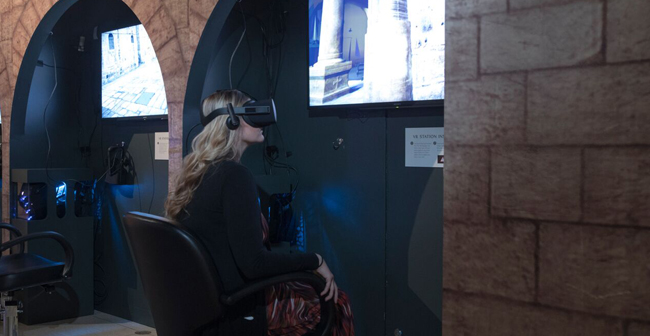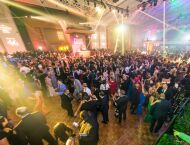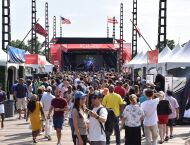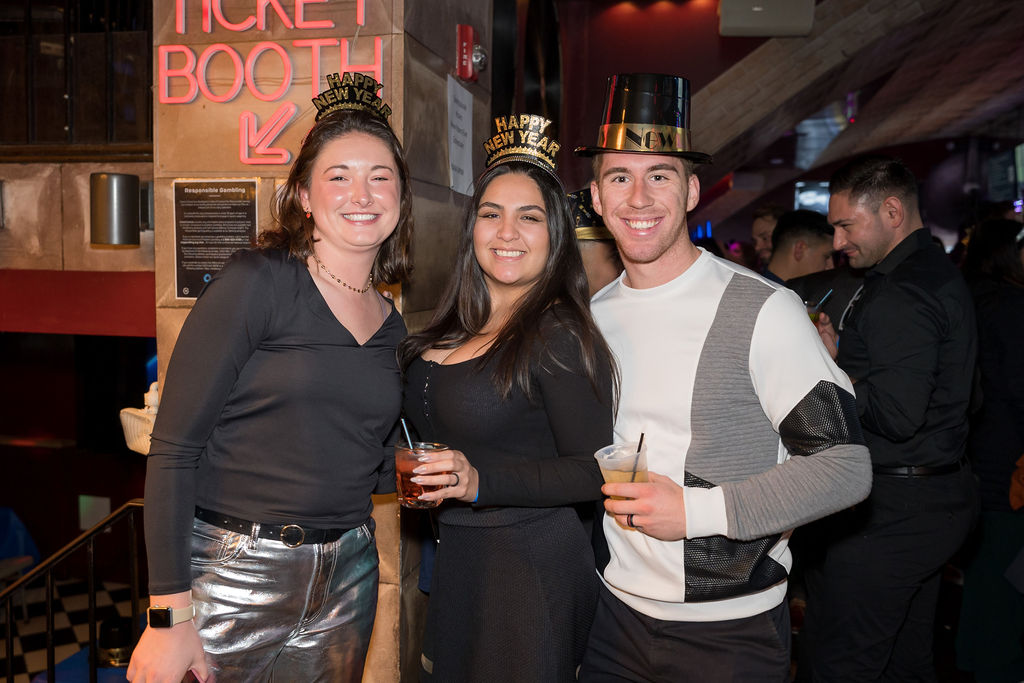Culture
 Photo: Rebecca Hale
Photo: Rebecca Hale
Science, Faith, Virtual Reality and Archaeology meet at National Geographic Museum’s The Tomb of Christ
May 7, 2018 @ 12:00am
Virtual reality headsets let you explore the Church of the Holy Sepulchre. Three dimensional videos take you through the streets of Jerusalem. All of this is an integral part of the National Geographic Museum’s Tomb of Christ exhibit.
With rooms recreated after the church, and panels packed with text and pictures, this exhibit teaches a lot. People in, or traveling to, DC before January 2019 should not miss this chance to meet a new place of mystery, and one that’s fully relevant to today’s divided world.
The exhibit highlights conservation and renovation done by scientists from the National Technical University of Athens on the Edicule in the Church of the Holy Sepulchre. The Edicule is the site within the site — a small shrine built over what’s remembered as the tomb of Jesus Christ, under the impressive dome of a large church in the Ottoman Baroque style.
The place of the Holy Sepulchre has a storied history. Over the past 2,000 years, it’s been a limestone quarry, a Jewish burial ground, a Roman temple to Venus, and multiple Christian churches—destroyed over the years by invaders and natural disasters, only to end up rebuilt. The most recent construction of the church and Edicule occurred in 1808, but the intervening 200 years have weighed heavily on the holy site.
This is where the scientists come in. Professor Antonia Moropoulou and her team have a reputation for saving historic monuments, including the Hagia Sophia in Istanbul and the Acropolis in Athens. Work on the Edicule, however, comes with a twist. The site is governed by the “Status Quo:” an 1852 agreement established by the Turkish sultan, when Jerusalem was under Ottoman rule, that any changes to the Edicule had to be agreed upon by unanimous decision of the six Christian orders that share the church—Greek Orthodox, Franciscan, Armenian, Coptic, Ethiopian and Syrian Orthodox.
Unanimous agreement isn’t easy. The six orders recognized all the way back in 1959 that the Edicule needed restoration. Mosaics were blackened by candle smoke and the walls were weak. Church leaders agreed to renovate on two conditions: the work would not interfere with pilgrims praying at the shrine, and the project would be completed between two Easter celebrations.
Then they waited for a proposal.
And kept waiting.
More than 50 years later, in 2015, church leaders finally received an offer from Moropoulou and her team.
The project used the best in available technology, including ground-penetrating radar, radiometry and robotics. Working by night, the team pulled off a trifecta: restoring the shrine’s original brilliance, reinforcing the structural integrity of the Edicule and contributing to archaeological understanding.
For the first time in centuries—and caught on camera by the National Geographic—researchers removed the stone slab covering Jesus’ tomb. The discovery of Byzantine material confirmed for archaeologists that this same site has been remembered as the location of Jesus’ tomb at least since the fourth century. Other archaeological evidence potentially dates this worship site to the first century.
The exhibit isn’t just about the restoration work, it’s literally a consequence of it. Part of the project involved gathering billions of recorded data points through millimeter-accurate LIDAR scans. With these data researchers created a complete 3D record of the site. This same LIDAR technology that allowed scientists to restore the site is what now allows museum visitors to tour the site through virtual reality.
The exhibit deals openly and respectfully with potentially controversial material—the biggest elephant not in the room. It clearly explains what is known through science, history and archaeological evidence. It doesn’t try to confirm or criticize religious beliefs that might be associated with the site.
“The religious significance of what lies hidden beneath the polished limestone and marble slabs of the church’s Edicule remains a matter of personal faith,” one panel suggests. “But people of all faiths can appreciate the beauty and long history of this storied building.”
The Church of the Holy Sepulchre—home to six different Christian orders, visited every year by believers and nonbelievers of every kind—serves as a microcosm of the whole city of Jerusalem. The city is also home to important Jewish and Muslim sites, including the Wailing Wall and the Dome of the Rock.
For this reason, the National Geographic Museum is also showing a film about Jerusalem the city. Although it’s separate from the Tomb of Christ exhibit (and requires a second ticket), this film provides important context to the experience. The video profiles three articulate teenage women—Jewish, Muslim and Christian. These women introduce viewers to their lives, with an emphasis on their similarities—especially their shared love of their families and city.
The exhibit can be viewed in an hour. The film lasts 40 minutes. And although the exhibit and film cost money (ticket information available at here), the museum also boasts free offerings.
National Geographic Museum: 1145 17th St. NW, DC; 202-857-7700; www.nationalgeographic.org/dc








